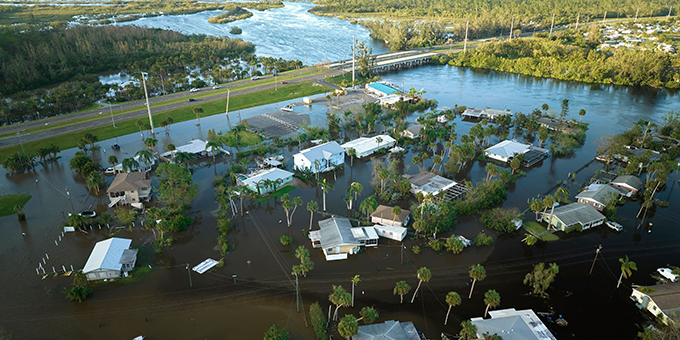You are here
Science Resources: Water and the Law
Flood - Too Much Water

Summary of Key Points
-
Flood management is of increasing legal importance. The two most common types of flood cases in federal courts involve takings issues and insurance claims. Flooding also touches on aspects of several key environmental statutes, including the Clean Water Act, the Emergency Protection and Community Right-to-Know Act, and the Comprehensive Environmental Response, Compensation and Liability Act.
-
Flooding as a natural disaster is characterized by both the overflow of water onto normally dry land and the human impacts of those increased water elevations. The five main types of flooding are flash, riverine, urban, lake, and coastal.
-
Floods are caused by a combination of climatological, meteorological, land use, and infrastructure design factors. Increased storm magnitude and intensity is anticipated to drive more flooding in the coming decades, as is increased runoff due to urban development. Infrastructure that is not well designed or operated can also cause flooding upstream or downstream. Other factors causing increased flooding include erosion, land subsidence, and sea level rise.
-
Both structural and nonstructural approaches are important to achieving community flood resilience. Engineered and nature-based solutions are used to manage urban, riverine, and coastal flooding. Nonstructural approaches to flood management include designing “safe to fail” infrastructure systems, zoning laws that minimize development in flood-prone areas, and flood insurance to communicate risk while mitigating loss.
